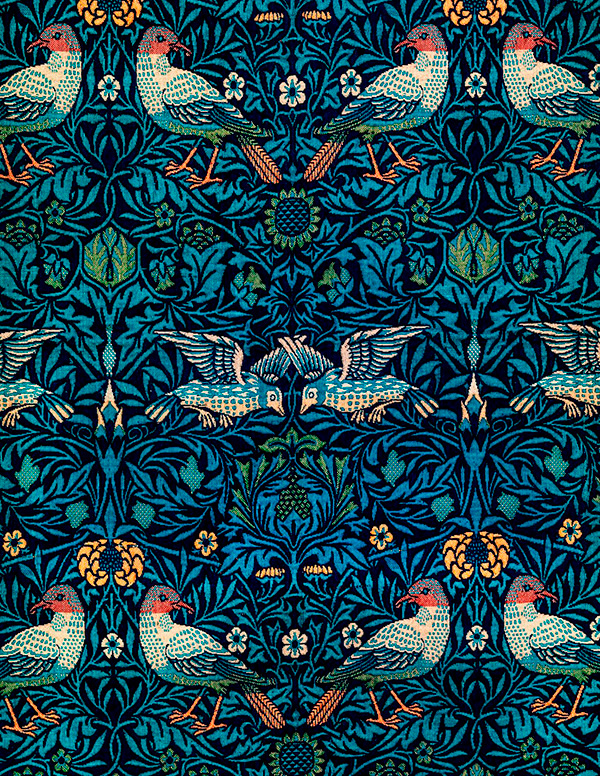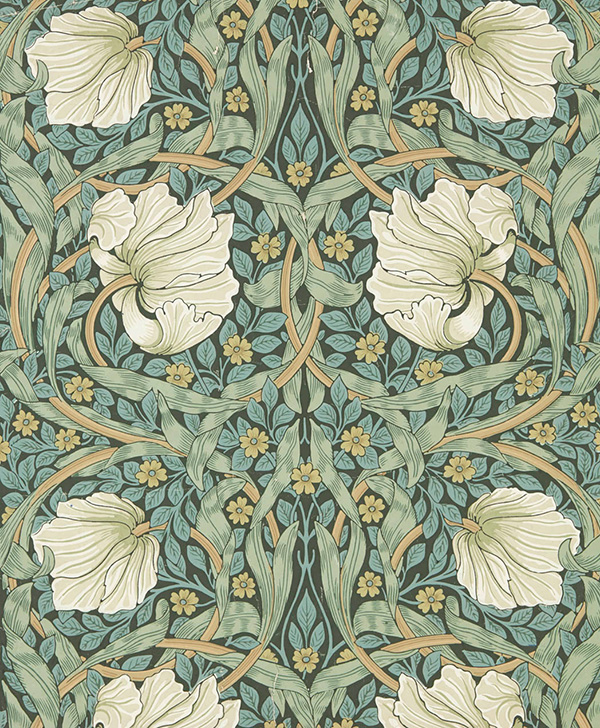


Walthamstow (London 1834–1896) was an English writer, social reformer, designer, and artist who, through his literary, theoretical, and artistic work, sought to renew culture by reviving the spirit of medieval arts and crafts. As a designer and craftsman, his work exerted a significant influence on book design, printing, the visual arts, and industrial design in the 19th century. His utopian social ideals were expressed in theoretical writings and novels such as "News from Nowhere" (1890).
William Morris founded Kelmscott Press in 1891, where he produced original works as well as reprints of classics, his best-known work being his edition of Chaucer's Canterbury Tales. Morris studied medieval art in detail, and it is therefore not surprising that his famous initials and book borders were based on the work of Peter Löslein and Bernhard Maler, who worked for the Augsburg printer and type designer Erhard Ratdolt (1474-84).
The Arts and Crafts movement aimed to revive traditional craftsmanship in contrast to the industrial production of the time, thereby bringing culture to the less affluent sectors of society. It was criticized for the fact that its products, due to their complexity and quality, could only be acquired primarily by the upper classes, even though its workers had a degree of control and a 'dignified and humane' role in production.
His critique of industrial production stemmed not so much from the capacity to manufacture large quantities of objects, but from the worker's transformation into a 'mere tool,' as the creative, artisanal, and 'human' aspects disappeared. Morris believed that the worker was becoming a machine, and this, for him, was the essence of the socialist and also romantic critique of the capitalist labor process.



0 comments